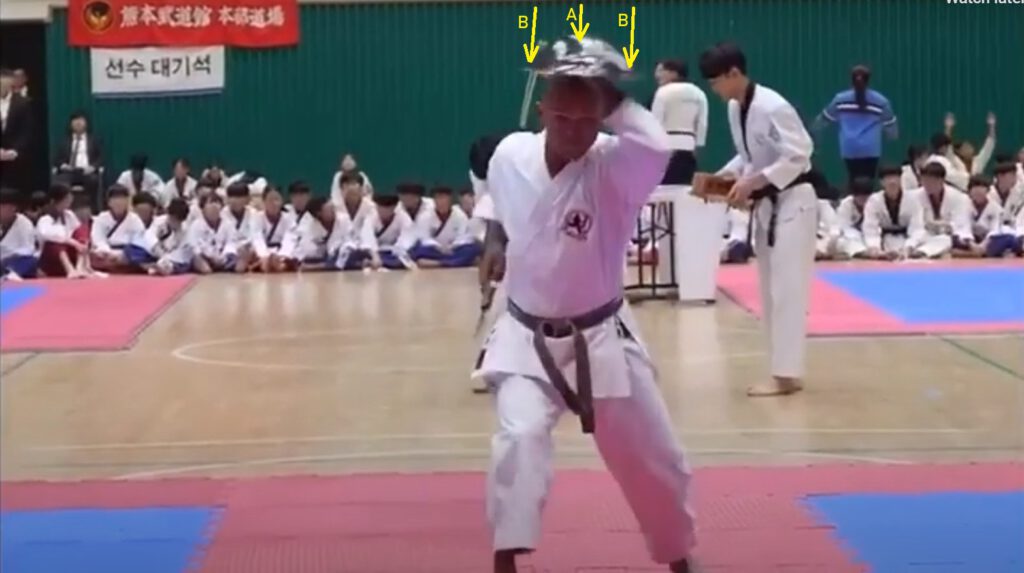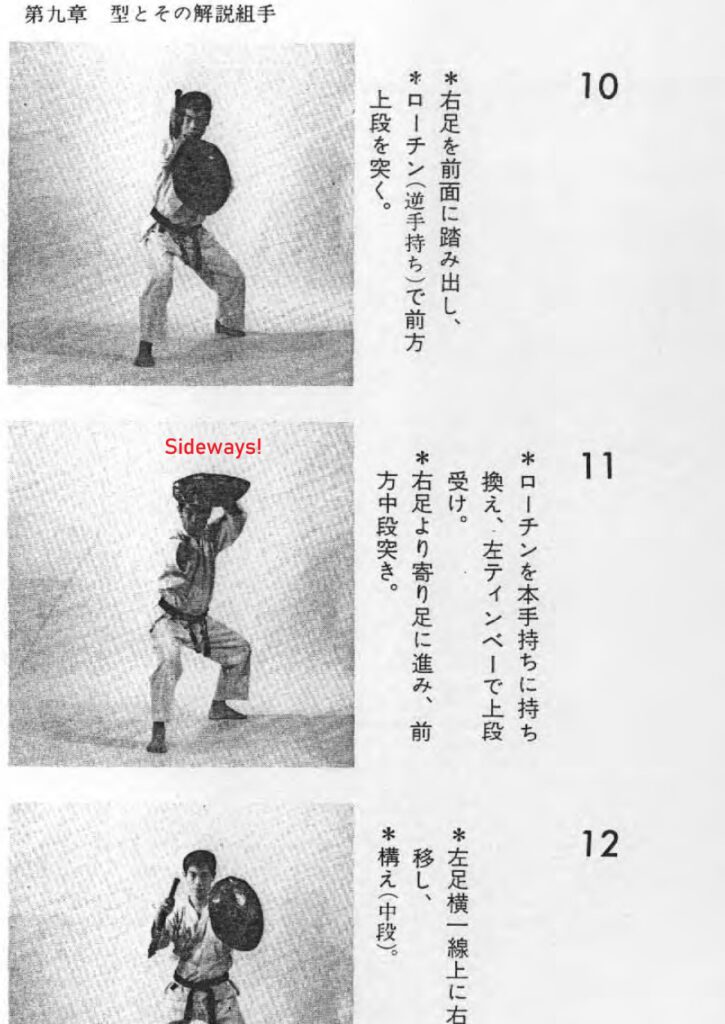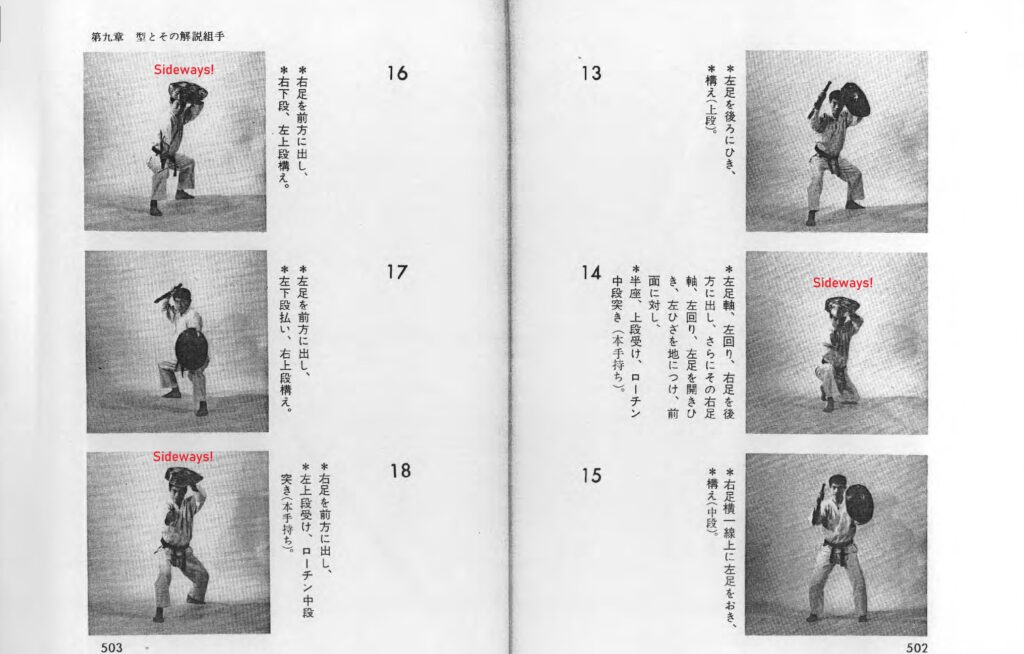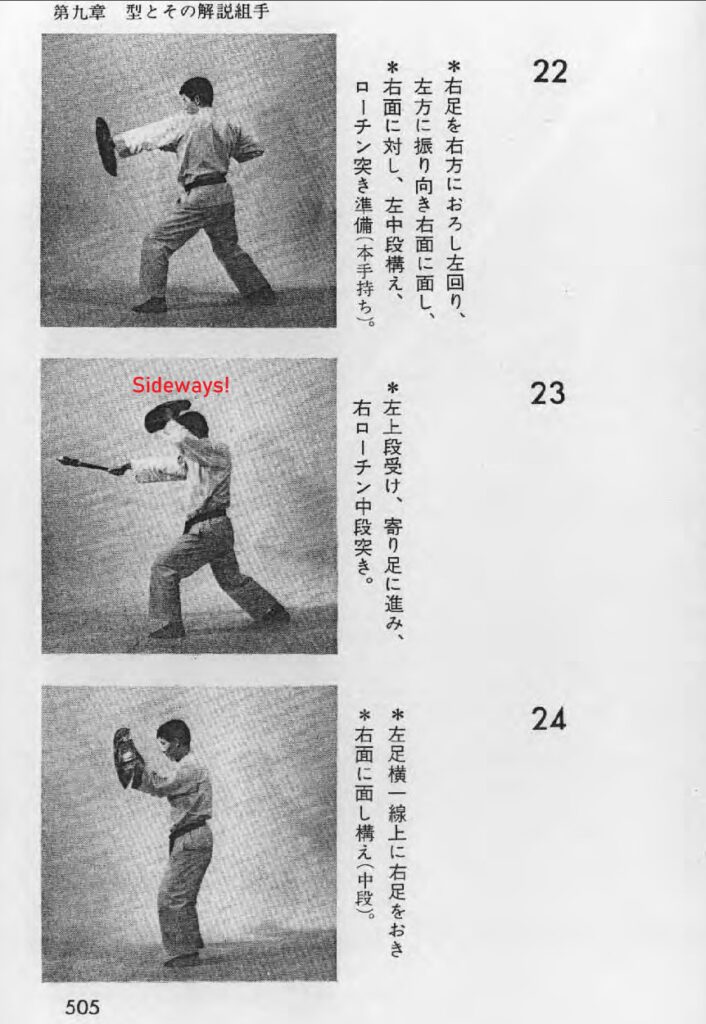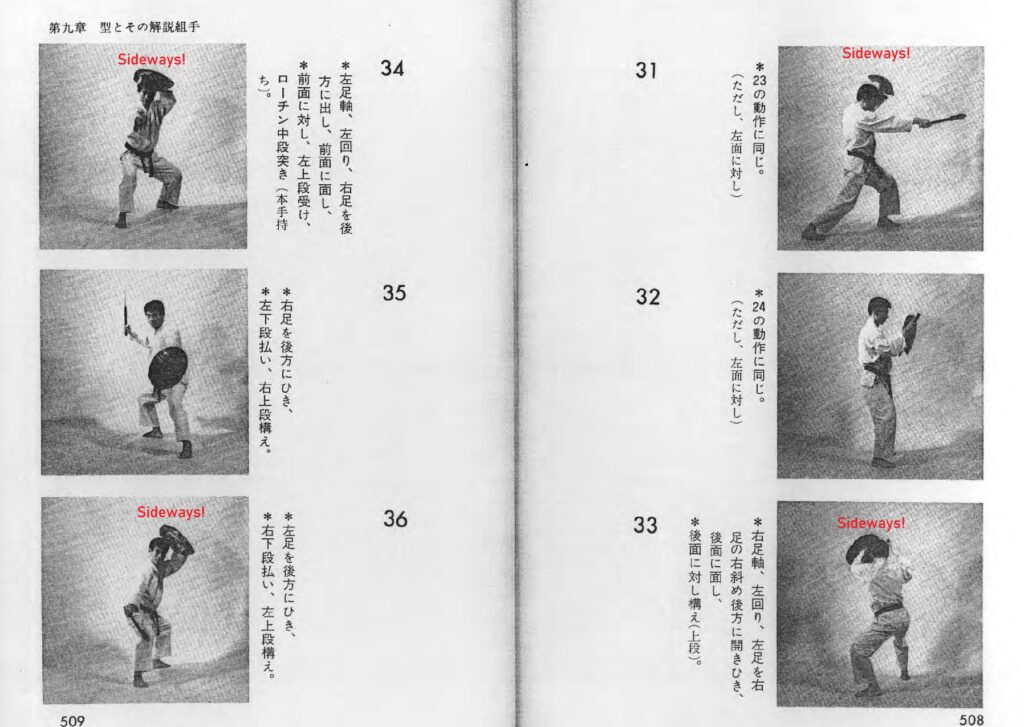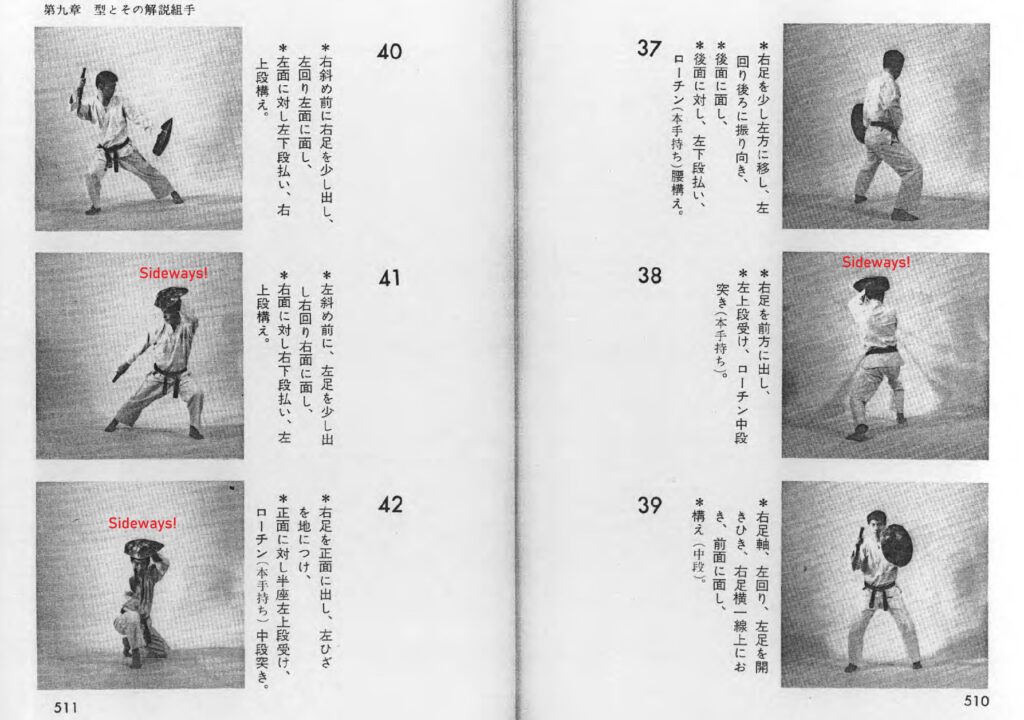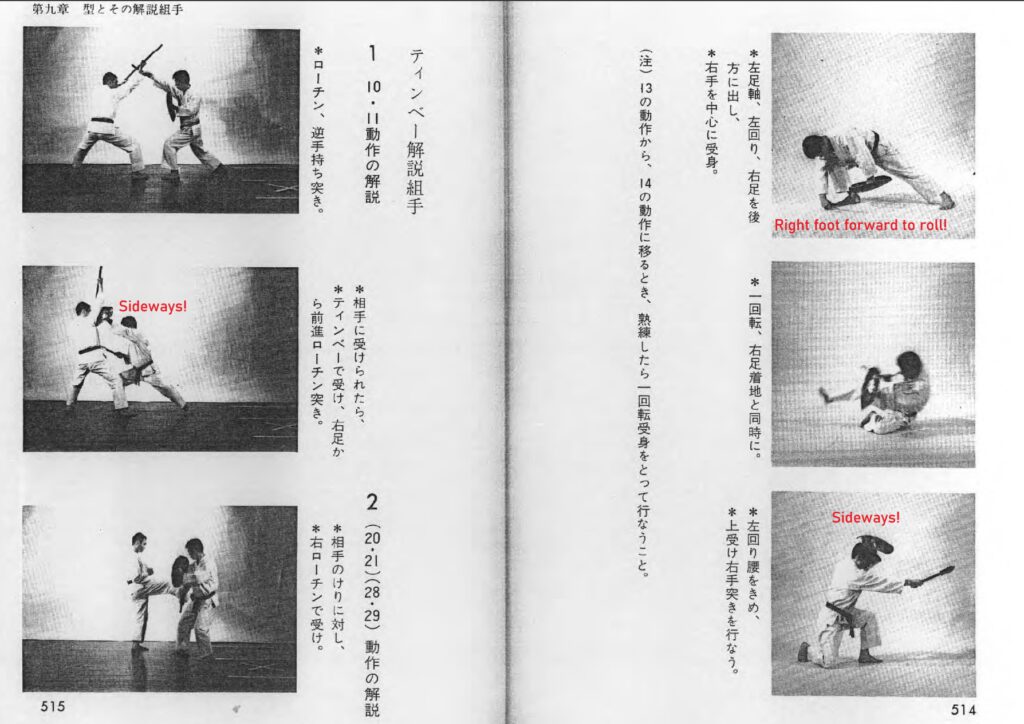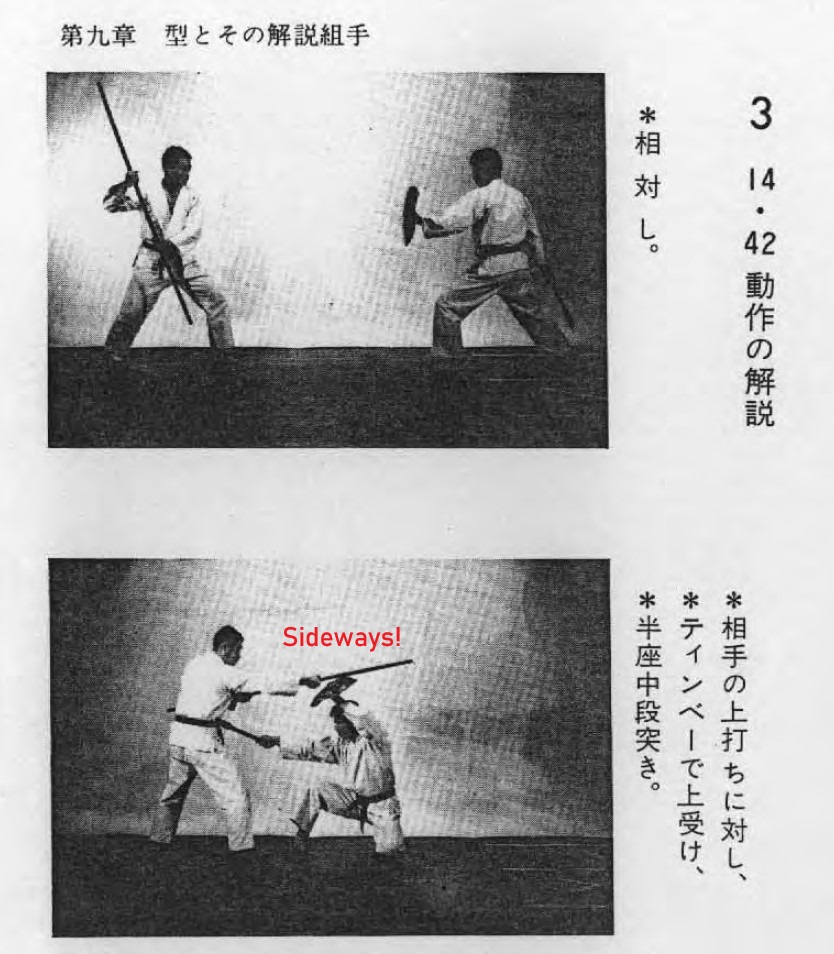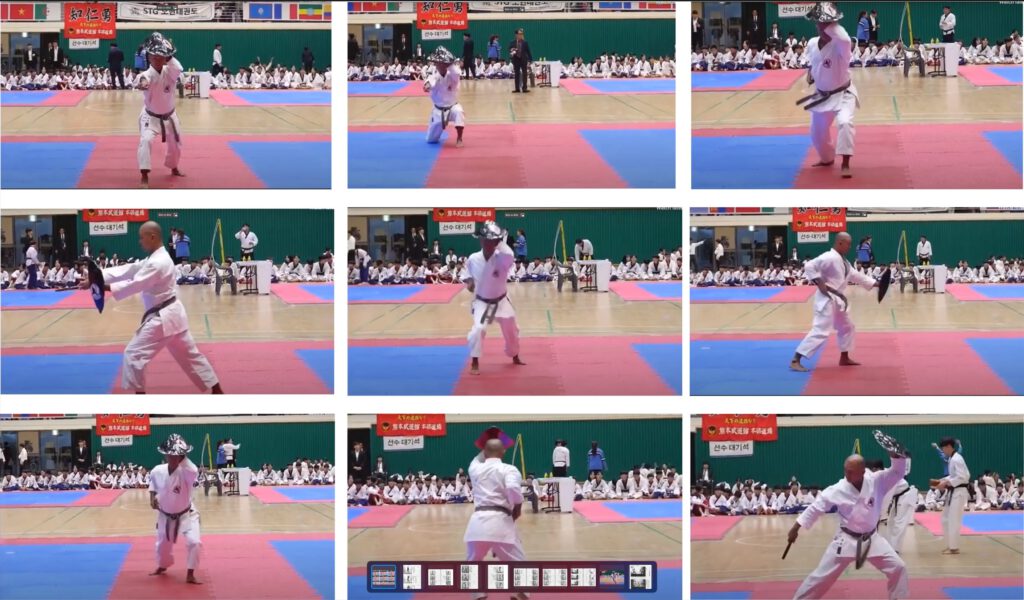Before I talked about the disadvantages of the single grip of the Taira tinbe. To give you an impression, I assumed a two-sided lever with the formula F1 · l1 = F2 · l2. As a comparison, the punching forces in amateur boxing are around 255 Kg. When assuming a similar force for a tsuki or a strike with a bō as an attack against the tinbē, your grip strength on the tinbē handle would need to be 1732,93 Kg just to balance the attacking force. That is about the biting force of a great white shark.
Now, geometry is important and there are differences between different groups of the Taira lineage.
See a short description of the issue here https://www.youtube.com/watch?v=Zcrbx6xrGLk
Below is a photo taken from this video showing the positioning of the tinbē as employed in the Shimbukan school. In all overhead positions in this kata, the tinbē is held like this. Attack trajectory A could be blocked, but attack trajectories B would tilt the tinbē and hit the shoulder, arm, collar bone or head.
But there are other positionings of the tinbē, which is with the tinbē held sideways. This gives a lot of stability to the tinbē and is excellent for practical use. In this case, your leverage is way better and you actually “have a grip.”
Sideways or frontward? This is important in terms of using tinbe or tinbe-like objects for self-protection.
© 2023, Andreas Quast. All rights reserved.

